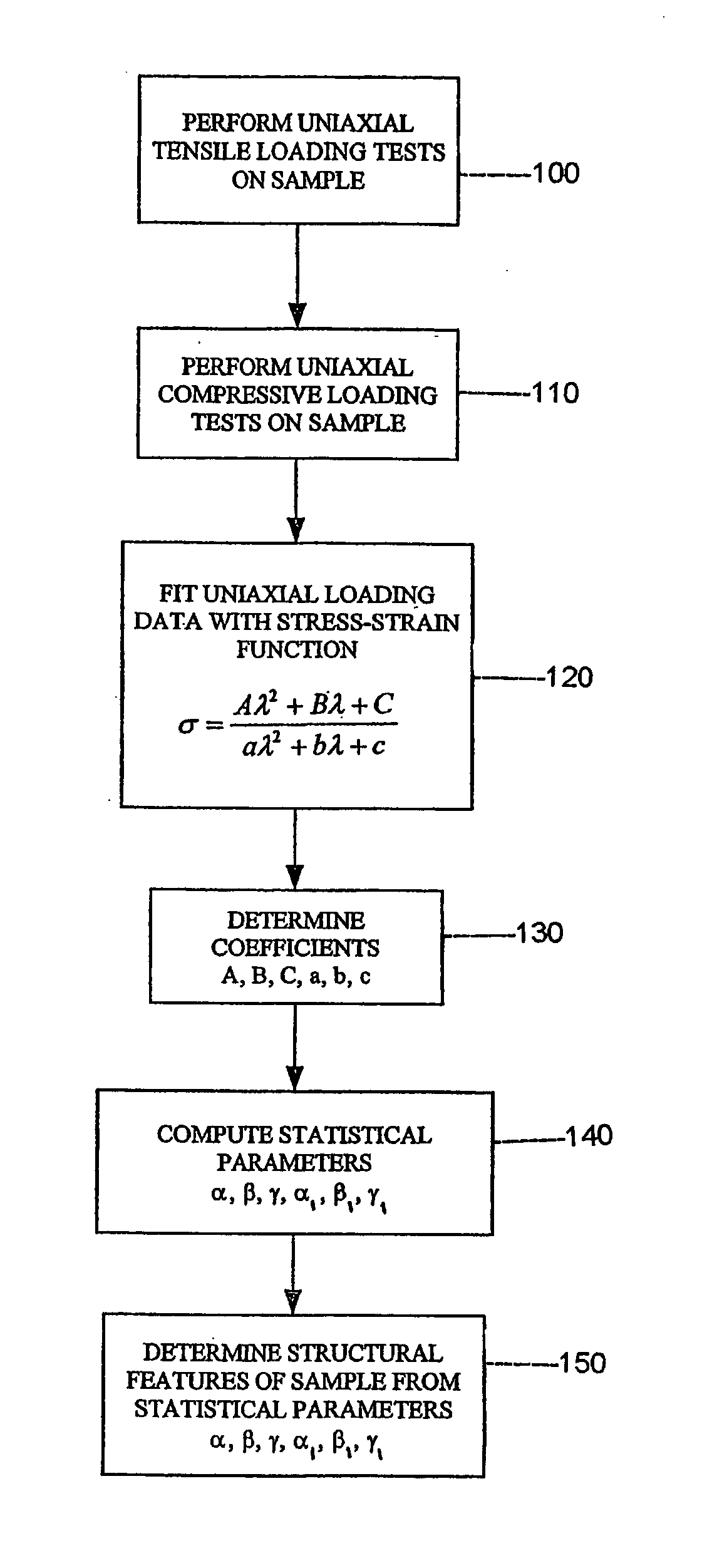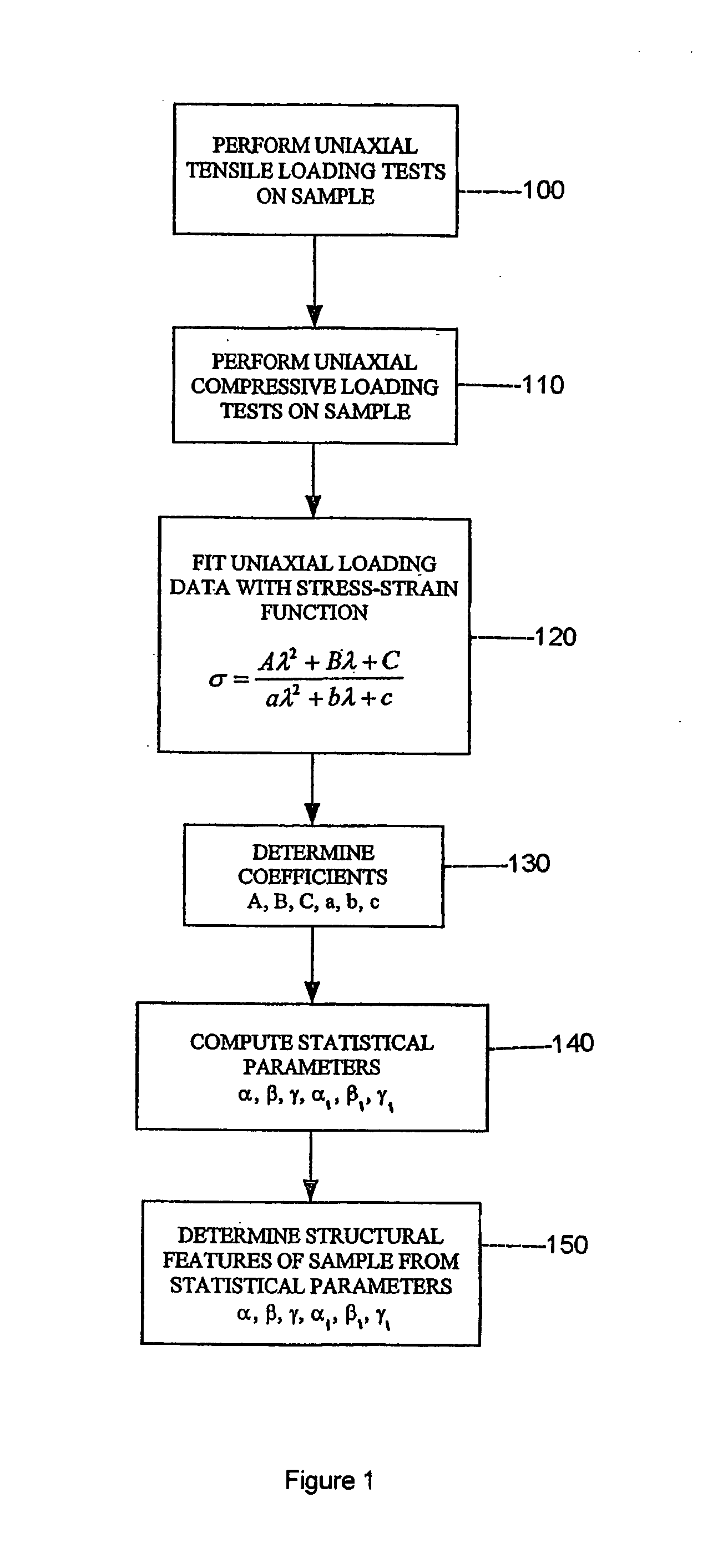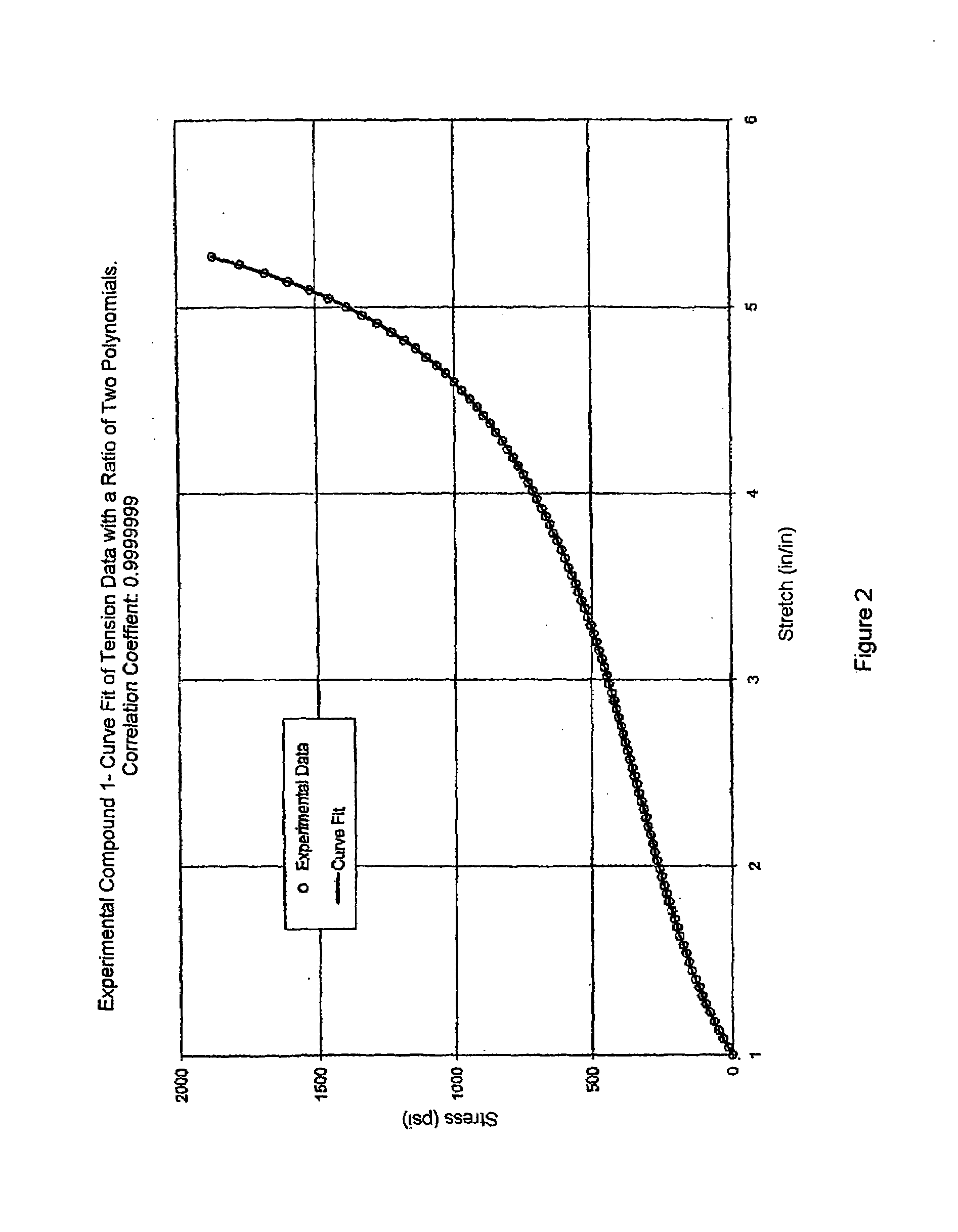Method of predicting mechanical behavior of polymers
a technology of mechanical behavior and polymer, applied in the direction of mechanical measuring arrangement, force/torque/work measurement apparatus, instruments, etc., can solve the problems of insufficient experimental confirmation of general validity of statistical characterization, high cost, time and money,
- Summary
- Abstract
- Description
- Claims
- Application Information
AI Technical Summary
Benefits of technology
Problems solved by technology
Method used
Image
Examples
Embodiment Construction
[0027]As described more fully below, one embodiment of the invention includes a method of determining, characterizing or otherwise predicting internal structural or micro-structural features of hyperelastic solids directly from macro-level loading tests. As used herein, “hyperelastic” refers to materials that become stiffer at large deflections, that is, materials that yield a non-linear stress-strain curve. Hyperelastic solids include polymers and other rubber-like materials. In other words, the present invention develops and utilizes a link between micro-level quantification of internal structural features and macro-level performance for a given hyperelastic solid. The invention may find particular advantage in determining the characteristics of a tire tread rubber, comprised of SBR or natural rubber. Beneficially, the invention is capable of functioning on these traditional tire rubbers and can perform the evaluation notwithstanding the presence of other ingredients, such as fill...
PUM
| Property | Measurement | Unit |
|---|---|---|
| stress-strain function | aaaaa | aaaaa |
| cross-link density | aaaaa | aaaaa |
| density | aaaaa | aaaaa |
Abstract
Description
Claims
Application Information
 Login to View More
Login to View More - R&D
- Intellectual Property
- Life Sciences
- Materials
- Tech Scout
- Unparalleled Data Quality
- Higher Quality Content
- 60% Fewer Hallucinations
Browse by: Latest US Patents, China's latest patents, Technical Efficacy Thesaurus, Application Domain, Technology Topic, Popular Technical Reports.
© 2025 PatSnap. All rights reserved.Legal|Privacy policy|Modern Slavery Act Transparency Statement|Sitemap|About US| Contact US: help@patsnap.com



